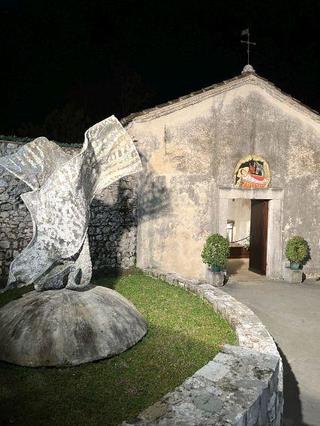
Chiesetta di Santa Cecilia
The Chiesetta di Santa Cecilia, pre-existing the Duomo, is rich in history, unfortunately not all known. It is known that over the centuries it has been the protagonist of the most secret, simplest, and truest local events, those that tell of the hardest struggles of the people of Spilimbergo. It is the oldest among the city churches, documented since December 3, 1271 (13 years before the construction of the Duomo). It may be contemporary with the Castello or even earlier. Otherwise, it would be difficult to explain why at the foot of the chiesetta, and with danger to its stability, graves were dug.
Exteriors and interiors
The exteriors
Perfectly oriented, it features only two original splayed windows from ancient times, replaced in 1506 by two full-arched stone windows. To the north, there is a full-arched door, without an archivolt, made of soft yellowish stone. Adhering to the jamb of this arch and carved in the same stone, two small figures can be seen, revealing the venerable antiquity and the inexperienced hand of their maker. They perhaps represent two saints: Saint Peter, as the patron of the Baptismal Font of Travesio, holding a key in his right hand and a chalice symbolizing priesthood in his left, and Saint Cecilia, the patron of the small church, holding a cross (perhaps Lombard) with her long dress and hands on her chest, the shaft of which reaches down to her feet.
The interiors
In all likelihood, the church was adorned with many frescoes, traces of which emerge here and there among the recently restored plasters. There are a Madonna with Child, Saint Mary Magdalene, Saint Cecilia, the Annunciation, and other ornaments. The Altarpiece of Saint Cecilia is the work of Gasparo Narvesa and is dated 1595.
Around 1500, the church, having lost its function, was converted into a mortuary chapel, and its apse was demolished. The bell tower was instead demolished in the second half of the nineteenth century. The entire small church was renovated at the end of the 1970s.
(texts: ViviSpilimbergo - Photo Denis Scarpante
